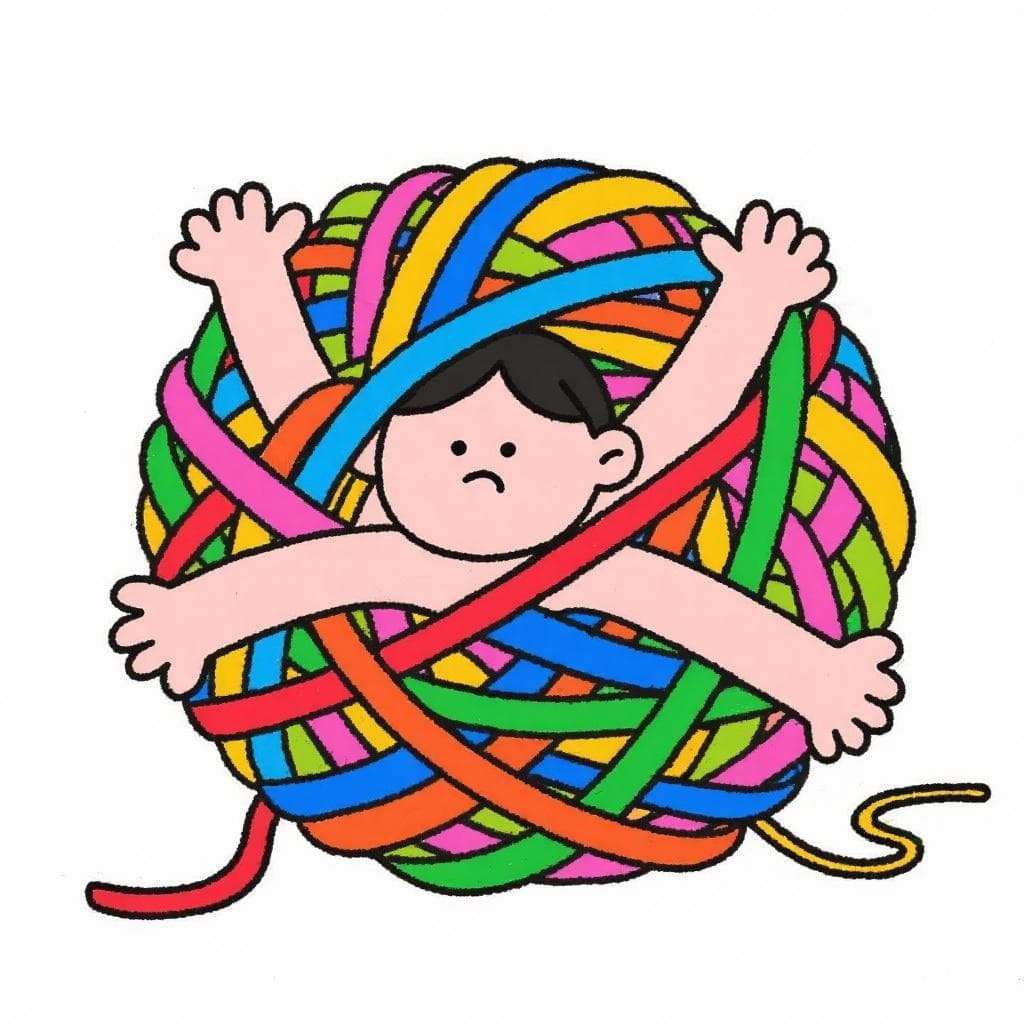Hacerse bolas
/ah-SER-seh BOH-lahs/
To get confused, mixed up, or mentally tangled, especially when dealing with complex information or instructions.
💡 Understanding the Idiom
🎨 Literal vs. Figurative

Literally, 'hacerse bolas' translates to 'making oneself into balls'.

In reality, it means to get mentally confused or tangled up in your thoughts.
Key Words in This Idiom:
📝 In Action
Con tanta información nueva, ya me hice bolas. ¿Podemos repasarlo?
B2With so much new information, I've gotten all mixed up. Can we go over it again?
No te hagas bolas, el proceso es simple: primero llenas este formulario y luego esperas tu turno.
B2Don't get yourself confused, the process is simple: first you fill out this form and then you wait for your turn.
La explicación del contador me hizo bolas; no entendí nada de los impuestos.
B2The accountant's explanation totally confused me; I didn't understand anything about the taxes.
📜 Origin Story
The exact origin is unclear, but the imagery is very strong. Think of a ball of yarn or thread ('una bola de estambre'). When it's neat, it's easy to use. But when it gets tangled, it becomes a messy, useless knot. This idiom applies that visual to our thoughts: when you 'te haces bolas,' your thoughts have become a jumbled, tangled mess that's hard to straighten out.
⭐ Usage Tips
For Mental Tangles
This is your go-to phrase for mental confusion. Use it when you're overwhelmed by instructions, a complex subject at school, or a confusing story. It's about your thoughts getting jumbled, not about physical objects being tangled.
Confusing Yourself vs. Confusing Others
Pay attention to how it's used. 'Yo me hice bolas' means 'I got confused.' The action happens to you. You can also say something 'te hace bolas' (makes you confused) or that you 'haces bolas a alguien' (you confuse someone else).
❌ Common Pitfalls
Not for Physical Objects
Mistake: "Trying to use it for a tangled rope: 'La manguera se hizo bolas.'"
Correction: While a native speaker might understand what you mean, 'hacerse bolas' is almost exclusively for people and their thoughts. For physical things like ropes, cables, or hair, the verb 'enredarse' (to get tangled) is the correct and much more common choice.
📚 Related Grammar
Want to understand the grammar behind this idiom? Explore these lessons for a deep dive:
Advanced Uses of 'se'
The entire idiom 'hacerse bolas' is a pronominal verb, meaning the action reflects back on the subject, like when we say 'ya me hice bolas' (I confused myself).
Negative and Affirmative Commands with Pronouns
This is a very common conversational phrase, demonstrated perfectly in the example 'No te hagas bolas,' which is a negative command telling someone not to get confused.
🌎 Where It's Used
Mexico
Extremely common and used daily. It's a hallmark of Mexican informal speech.
Central America
Widely understood and used in many countries, though perhaps not as frequently as in Mexico.
Spain
Not used. A speaker from Spain would find it very unusual. They would say 'hacerse un lío' or 'liarse' to express the same idea.
🔗 Related Idioms
✏️ Quick Practice
💡 Quick Quiz: Hacerse bolas
Question 1 of 1
If your friend says 'ya me hice bolas con el mapa', what is happening?
🏷️ Tags
Frequently Asked Questions
Is 'hacerse bolas' considered slang?
It's definitely informal, but it's so widespread (especially in Mexico) that it's more of a common colloquialism than slang. You can use it with friends, family, and in most informal daily situations without any issue.